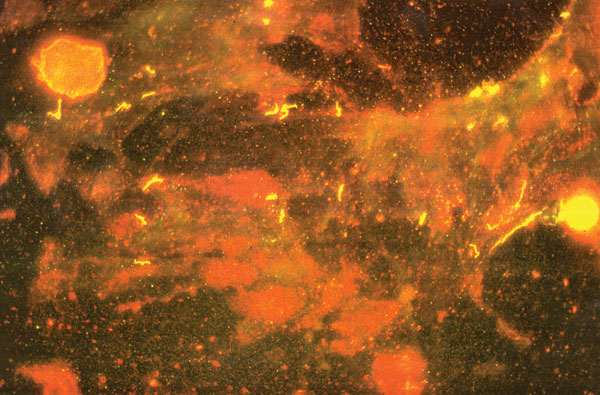Volume 8, Number 2—February 2002
Perspective
Vector Interactions and Molecular Adaptations of Lyme Disease and Relapsing Fever Spirochetes Associated with Transmission by Ticks
Figure 3

Figure 3. Borrelia hermsii visualized with an anti-variable small protein (Vsp) 33 antibody in a squashed salivary gland of Ornithodoros hermsi. Persistent infection of the salivary glands allows these spirochetes to be transmitted in only minutes while these ticks feed.
Page created: July 14, 2010
Page updated: July 14, 2010
Page reviewed: July 14, 2010
The conclusions, findings, and opinions expressed by authors contributing to this journal do not necessarily reflect the official position of the U.S. Department of Health and Human Services, the Public Health Service, the Centers for Disease Control and Prevention, or the authors' affiliated institutions. Use of trade names is for identification only and does not imply endorsement by any of the groups named above.